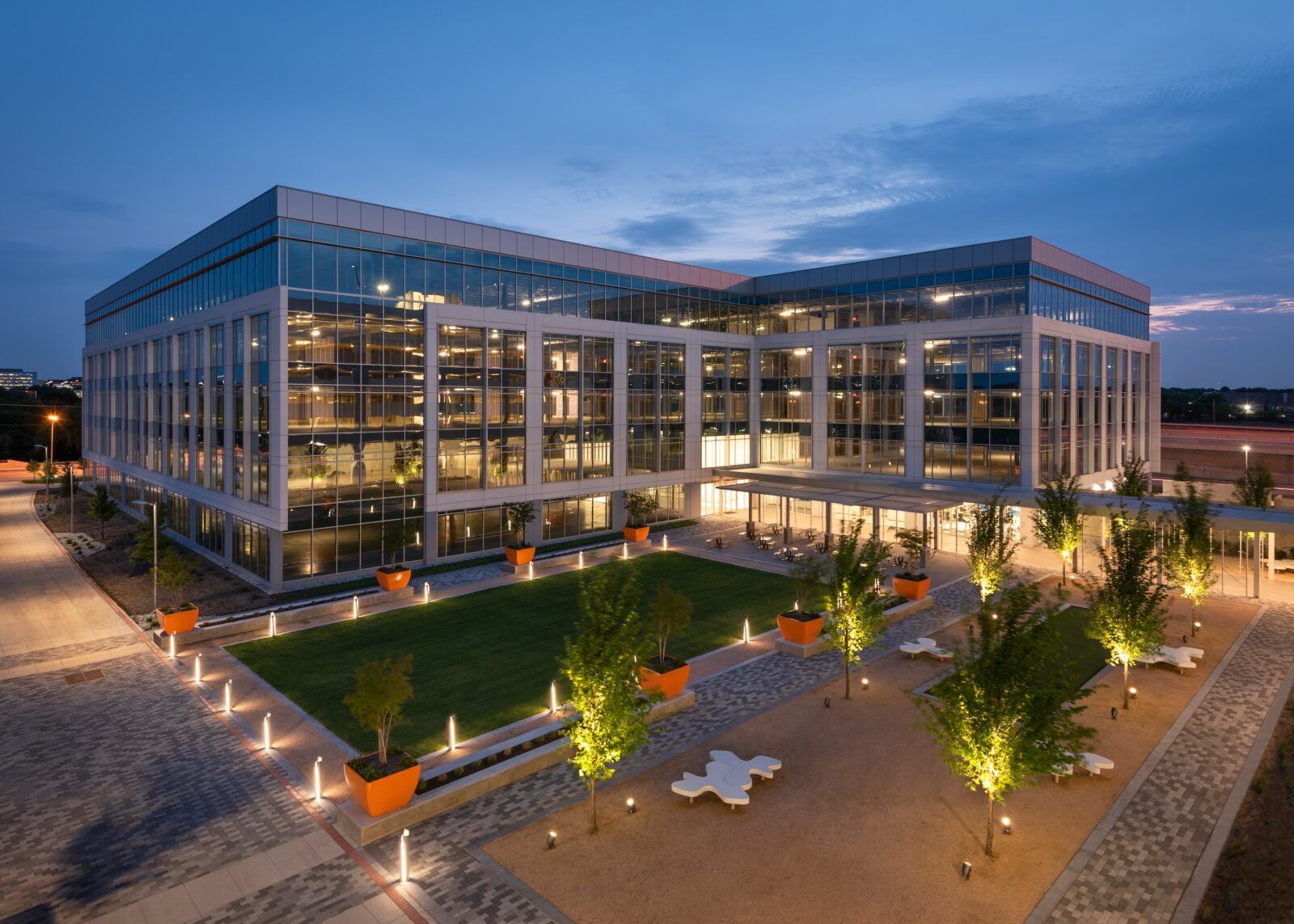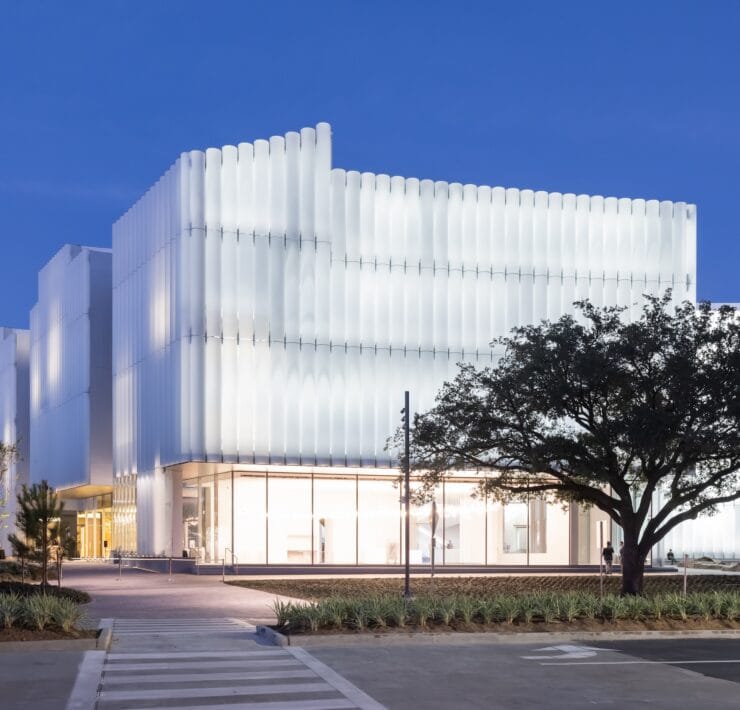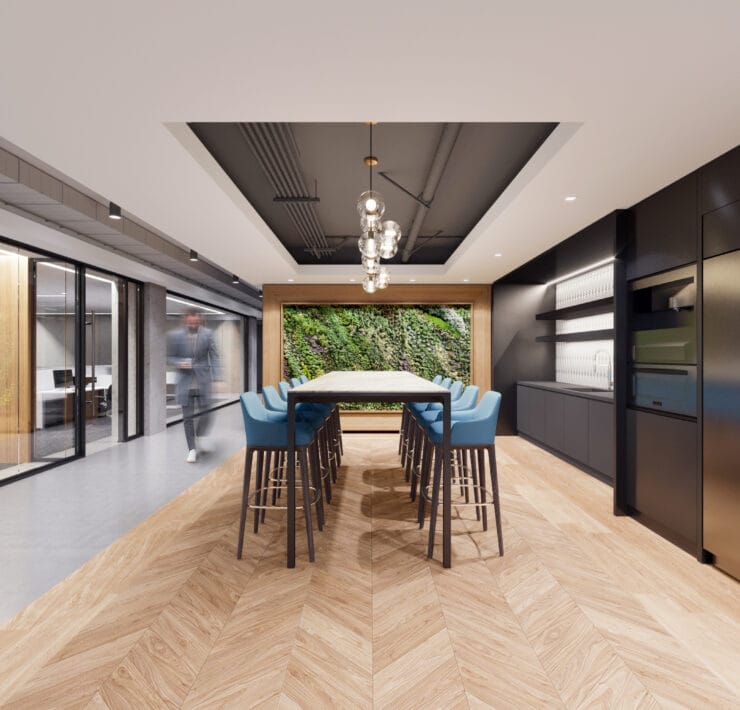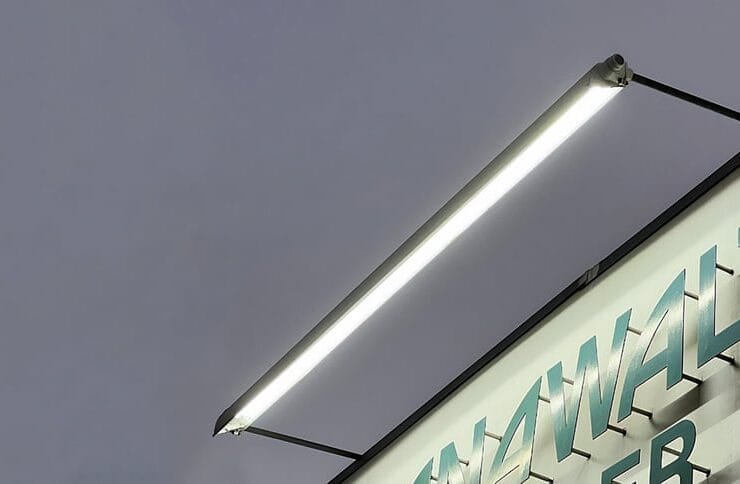Proper artificial lighting elevates outdoor spaces by providing safety and atmosphere. Outdoor lighting illuminates public space, guides people through paths, highlights landscape elements and transforms architectural exteriors. Outdoor lighting also impacts human psychology as well as natural ecosystems. Light is a powerful medium for enhancing our attention and emotions. Follow these principles to transform your outdoor projects into comfortable and special experiences.
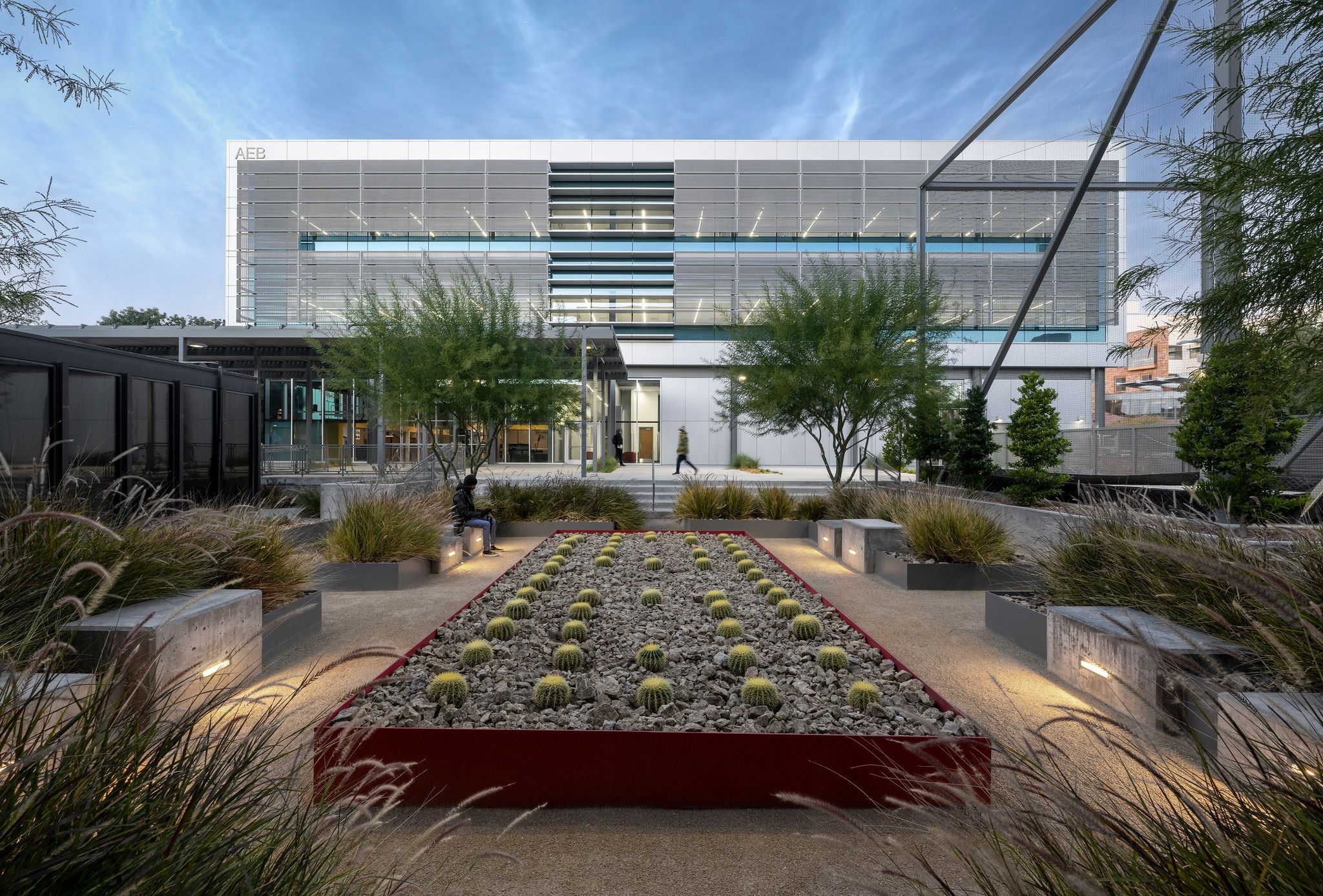
Table of contents
Principles for outdoor lighting
The basic principles for responsible outdoor lighting, as described by the IES (Illumination Engineering Society), should be used to appropriately apply artificial lighting to exterior landscapes.[1a] These principles ensure that outdoor spaces have sufficient but controlled lighting so as not to disturb people or environments or use unnecessary energy.
Basic outdoor lighting principles
1. Useful – All lighting should have a clear purpose
If there is no purposeful intent to light an outdoor area, do not apply light there. Unnecessary lighting can be disruptive and waste energy.
2. Targeted – Light only where it is needed
When lighting a specific outdoor space, direct the lighting where it is needed. It is easy to flood an area with light, creating light trespass, where light spills into neighboring properties.
3. Low light levels – Light should be no brighter than necessary
Outdoor spaces do not typically need very bright light. Sufficient light levels should not be exceeded.
4. Controlled – Only use lighting when it is useful
Lighting controls are highly effective at turning on and off for intentional lighting usage. Time-controlled outdoor lighting is best for minimizing unwanted disruption to others and also saving energy.
5. Color – Use warmer color lighting when possible
The color temperature of lighting has a significant impact on human health and wildlife. Using warmer color temperatures (2700 Kelvin or less when possible) is optimal to reduce these unwanted negative effects.

These basic outdoor lighting principles should be combined with complementary lighting design principles to produce quality outdoor spaces. The lighting principles of glare mitigation, targeted light levels, visual light level adaptation, uniformity, intentional color temperature and CRI usage are best to use when developing any outdoor project.[1b]
It is easy to accidentally produce excessive visual glare in outdoor spaces when using bright light sources at varying heights and directions to cover large areas. When bright light reaches our eyes directly from its source, the effect is uncomfortable and disorienting. Therefore, use lighting fixture targeting, placement, louvers and shielding to avoid creating glare. Similarly, avoid high contrast ratios (more than 4:1) between brighter and darker spaces. It takes considerable time (20-30 minutes) for human eyes to adjust to darker conditions.[2] When our eyes cannot quickly adjust to new lighting conditions, difficulty seeing becomes a safety issue.
Color temperature and color rendering for outdoor lighting require specific care. 80+ CRI light sources are a minimum requirement for most outdoor spaces, such as typical parking lots or pedestrian paths, but 90+ CRI is suggested for special areas, such as event or public activity spaces. Low CRI lighting can make things, such as car colors, difficult to identify, creating inconvenience, discomfort and safety issues.[1c]
High color temperature light sources (above 3000 Kelvin) in the evening disturb our circadian rhythms, making it more difficult to sleep and also disrupting our hormones. Moreover, ecosystems are easily disrupted by artificial light. When developing an outdoor project in proximity to wildlife, dark sky lighting experts should be consulted to avoid significant habitat harm. Depending on the condition, warmer color temperature lighting (such as 2200 Kelvin amber) may be necessary to reduce or eliminate any negative impacts on natural ecosystems.
Light pollution
Light pollution is excessive light from artificial sources that disturbs people, wildlife and the night sky. Artificial lighting affects human psychology, with ramifications on human health. Because of these effects, artificial outdoor light should not trespass into homes or private areas of other people. Using warmer color temperature light sources (less than 2700 Kelvin or, at times, 2200 Kelvin) also helps to mitigate the disruption of circadian rhythms during the evening.
Similarly, many plants and animals rely on natural lighting cycles to survive and thrive. Carefully control outdoor lighting to minimize the effect on natural ecosystems as little as possible. It is also important to keep our night sky dark, as light pollution continues to make stargazing and research more difficult.
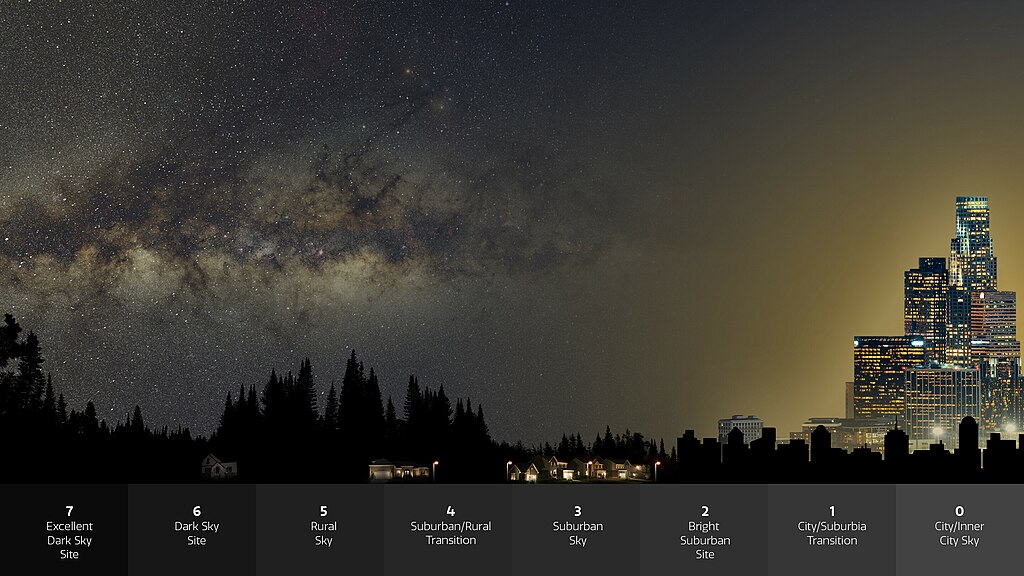
The BUG (backlight uplight glare) rating system guides the dark sky concepts and applies to different urban zone types.
- Backlight mitigation reduces the amount of light trespass from behind fixtures.
- Uplight mitigation reduces the amount of light that illuminates the sky (contributing to light pollution).
- Glare mitigation reduces the amount of harsh direct visual light coming from a light source.
Identify the Lighting Zone for a project to follow the regulations for that zone. Jurisdictions may also have additional regulations that address the BUG ratings. Lighting Zones are categorized from LZ-0 to LZ-4, identifying zones of less urban density to more urban density. BUG rating requirements are stricter for rural or natural areas. Regardless of local regulations, it is always best to use outdoor fixtures with minimal backlight, uplight and glare, depending on your condition.
Light levels for application and safety
It is important to target appropriate light levels to create the best outdoor projects. Outdoor spaces must account for surrounding darkness to ensure a smooth transition from dark to light. Creating a hierarchy of outdoor lighting enables comfortable and safe transitions from different spaces.
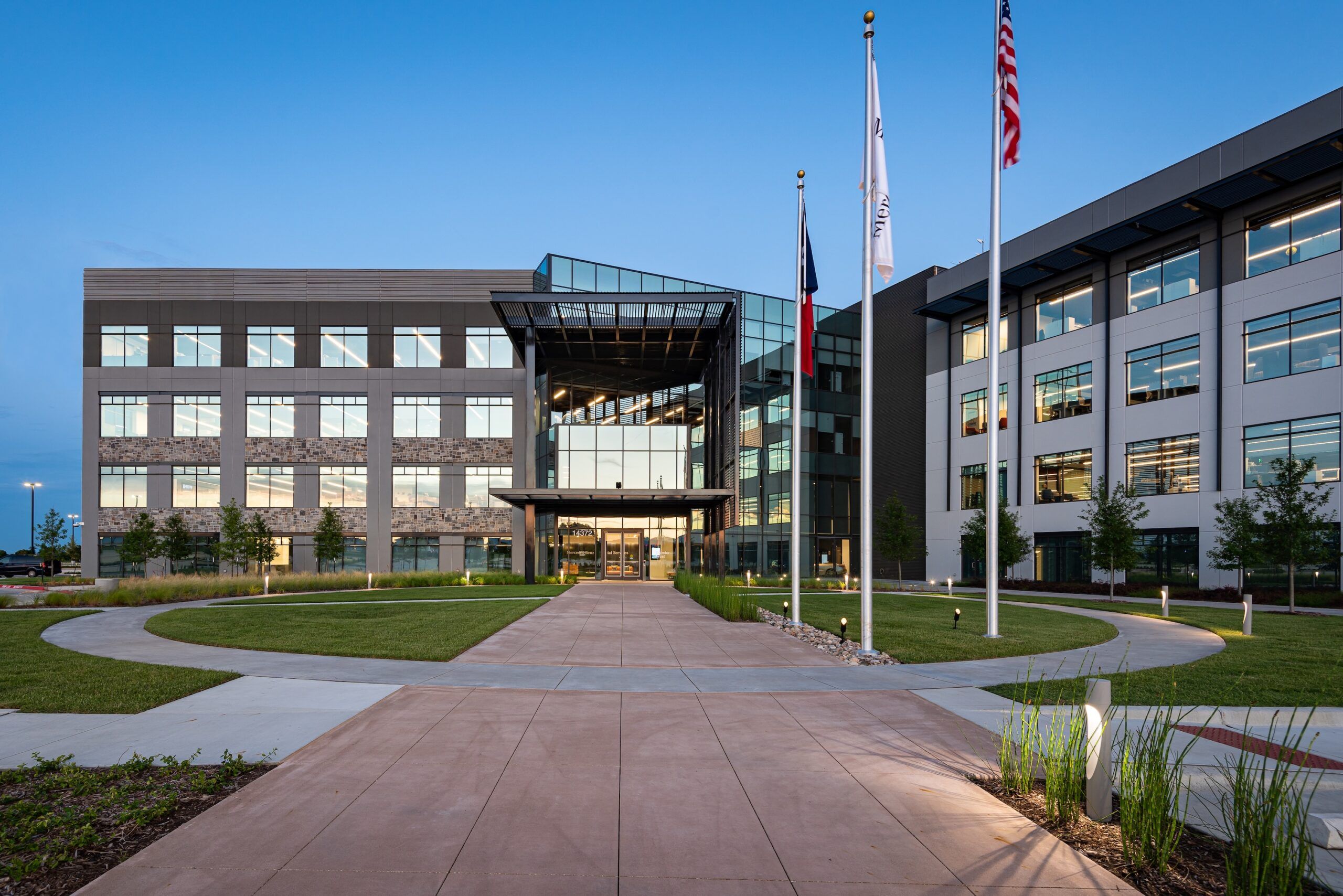
Typical outdoor space types include streetscapes, pedestrian pathways, relaxed public areas or defined event spaces. Each space type requires specific light levels, but defining the illumination of these spaces should also involve how the spaces relate to one another. To allow for visual adaptation in or between outdoor spaces, reduce high contrast ratios. A contrast ratio of 4:1 (brightest to darkest illumination) is visually noticeable. Any transition from dark to illuminated spaces should be gradual.
People’s eyes naturally pay attention to illumination, so use lighting to guide them through outdoor spaces. Apply a moderately bright pathway for pedestrians to move through an outdoor environment while enabling special moments to be brighter and stand out from the more relaxed zones. Outdoor elements, such as trees, monuments, walls or architecture, require specific illumination. Keep in mind that the type of outdoor project, as well as the Lighting Zone where it is located, are important factors in determining necessary light levels.
The following is a guide for the light levels suggested for various outdoor spaces. (Illumination suggestions are upper average targets given in footcandles, based on the most common Lighting Zone 3, with average material reflectance.)
| Space Type | Suggested Horizontal Illumination fc, (uniformity ratio) | Suggested Vertical Illumination fc, (uniformity ratio) |
|---|---|---|
| Pedestrian path | 1.5 fc (10:1) | |
| Ped. path near architecture | 3 fc (10:1) | |
| Ped. path near waterfront | 3 fc (8:1) | |
| General circulation ped. path | 4 fc (5:1) | |
| Stairs and ramps | 4 fc (5:1) | |
| Pedestrian overpass | 3 fc (5:1) | |
| Pedestrian tunnel (daytime) | 10 fc (4:1) | 15 fc @ 5’, (3:1) |
| Pedestrian tunnel (nighttime) | 3 fc (4:1) | 3 fc @ 5’ (3:1) |
| Cycling paths | 3 fc (5:1) | |
| Playground | 8 fc (5:1) | |
| Local roadway | 1 fc (6:1) | |
| Curbside drop off | 4 fc (5:1) | |
| Covered drop off | 5 fc (4:1) | 2 fc @ 5’, (8:1) |
| Parking lot | 3 fc (3:1) | |
| Grass or amphitheater | 0.8 fc (8:1) | |
| Outdoor dining areas | 8 fc (8:1) | |
| Spectator seating, stairs, paths | 8 fc (5:1) | |
| Amenity areas | 8 fc (5:1) | |
| Terraces, patios, decks | 3 fc (8:1) | |
| Wall or fence | 2 fc | |
| Facade | 2 fc | |
| Building entry | 4 fc (5:1) | 2 fc @ 5’ (5:1) |
| Art, sculpture, monument | 2 fc (3:1) | |
| Trees, landscape Elements | 0.8 fc (8:1) | 2 fc |
| Swimming pool adjacent areas | 8 fc (4:1) | |
| Emergency egress Path | 0.1 fc |
Adjustment factors should be applied by Lighting Zone, material reflectance or other program needs. The above footcandle suggestions are based on Lighting Zone 3. Footcandle suggestions for higher or lower lighting zones should halve or double the metric. For example, for a project in Lighting Zone 2, divide the illuminance by half.
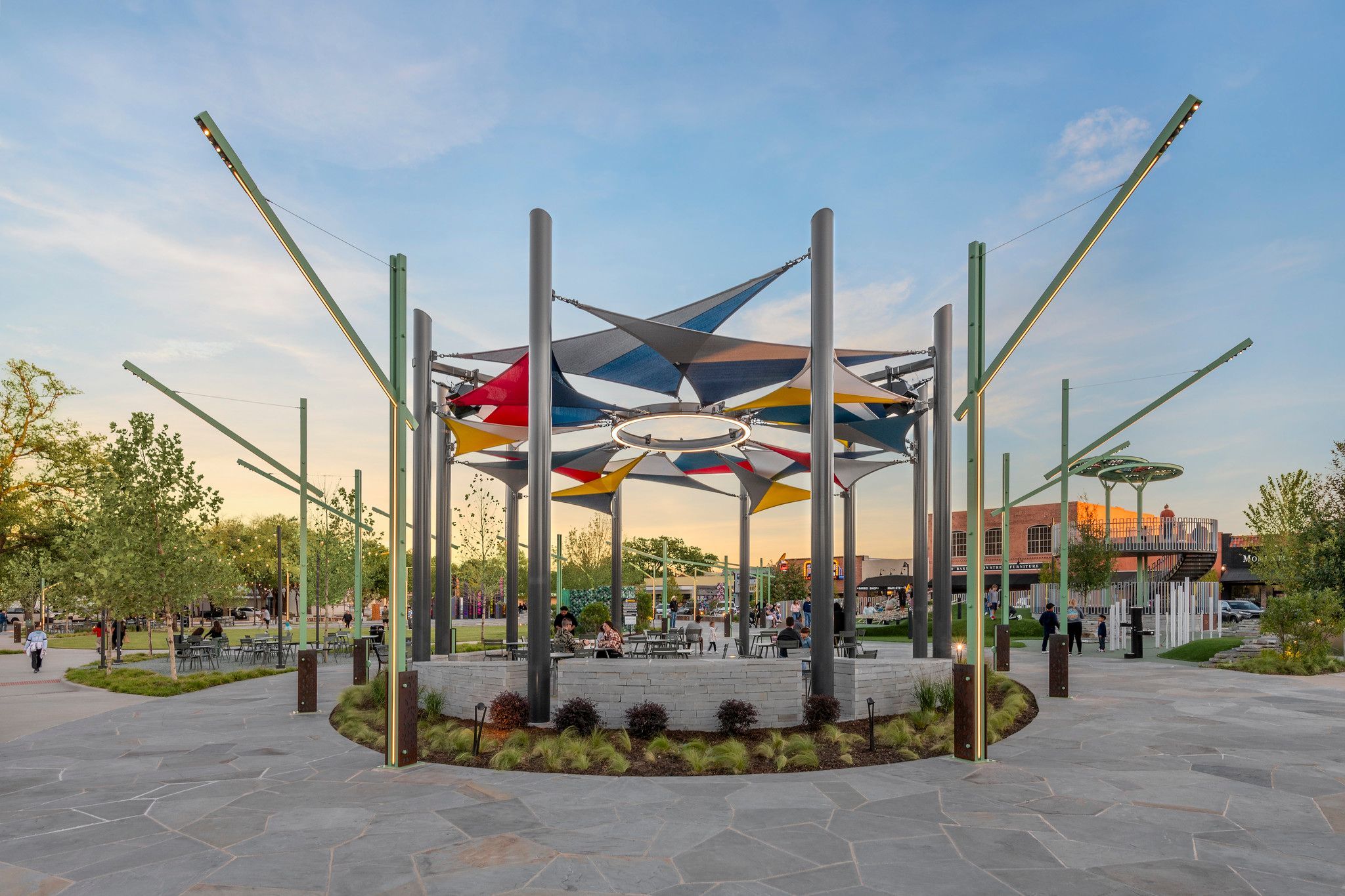
Similarly, the suggested illumination for facades references an average reflectance value (0.5). When figuring for very high or very low reflectance materials, multiply by two for dark materials or divide by two for bright materials. Most building codes require a minimum of one footcandle of illumination for parking lot areas and two footcandles at entrances and exits.[3] The 0.1 footcandle minimum average illuminance for egress paths is also a regulatory requirement.
Regulatory requirements
Outdoor lighting regulations are important for safety, comfort and energy consumption. BUG rating requirements are correlated to their lighting zone and required for any lighting fixture above 6,200 lumens. For example, the BUG rating of an outdoor light fixture in LZ3 is required to be at least B3-U3-G3 in each respective category (backlight can depend on the mounting height of fixtures). However, selecting outdoor light fixtures with lower BUG ratings is generally beneficial. Exceptions to these ordinances, such as for signs, building facades, monuments, public roads, etc, should be referenced.
Adherence to outdoor lighting control regulations is also critical. Outdoor lighting must be controlled separately from indoor lighting. Outdoor lights must be turned off during the daytime using a photo sensor or automatic timer. Motion sensor controls must also be used to lower the power of outdoor lighting by 50% to 90%, as well as be able to turn off when unoccupied. These above regulations do not apply to programs for health and safety or tunnels.
Lighting power allowance (LPA) is the amount of power allowed for lighting an outdoor hardscape. This allowance is calculated by adding an Initial Wattage Allowance (IWA), an Area Wattage Allowance (AWA is the total area of the lit hardscape) and a Linear Wattage Allowance (LWA is the total perimeter of the hardscape).
LPA = IWA + AWA + LWA
For Lighting Zone 3, the IWA is 250 watts, the AWA is 0.021 watts per square foot, and the LWA is 0.21 watts per linear foot. For Lighting Zone 2, the IWA is 200 watts, the AWA is 0.019 watts per square foot, and the LWA is 0.15 watts per linear foot. These metrics reference the California Energy Commission Title 24; differing regulation standards can be found for other jurisdictions.[4]
Special outdoor lighting concepts
Apply lighting design techniques to create beautiful outdoor conditions. Humans respond emotionally to brightness, contrast and color, a principle that can be used in lighting outdoor spaces. “Light exposure seems to influence the way [the hypothalamus] acts like an amplifier for emotional signals, particularly when we’re in bright environments.”[5]
These human-centric concepts in outdoor lighting are effective in guiding wayfinding and generating visual interest. Typically, fixtures such as bollards, pathway lighting, step lighting, pedestrian pole lighting and area lighting illuminate paths or outdoor areas. Moderate levels of light can bring attention to general outdoor circulation, while brighter lights or even different colors can illuminate special paths or programs,. Using a colored lens or RGB (Red, Green, Blue) light fixture immediately differentiates outdoor spaces. This concept of lighting contrast can also show people where to go or where program elements may be happening, such as illuminating building entrances.
It is also transformative to accent outdoor elements such as trees, signs, monuments or art. Point source lighting fixtures are easy to mount to any soft or hard landscape condition and can be easily directed to make an outdoor element glow. Mounting light fixtures to buildings or tall poles is also an effective method to light larger elements or areas. For general outdoor social spaces, string lighting (known as catenary lighting) is useful in generating a warm and fun atmosphere. Be mindful of light output and beam spread when selecting outdoor fixtures.
When illuminating a building facade, entrance or wall, brighter lighting will make the exterior element stand out. Adjustable flood lighting, linear lighting or point sources are all effective for illuminating an exterior element. Lighting a vertical path element, such as a fence, can create a phenomenal pedestrian experience. Use a fixture with a tight beam spread mounted close to the exterior object to graze any interesting material. Mounting exterior lighting downward helps to reduce light pollution.
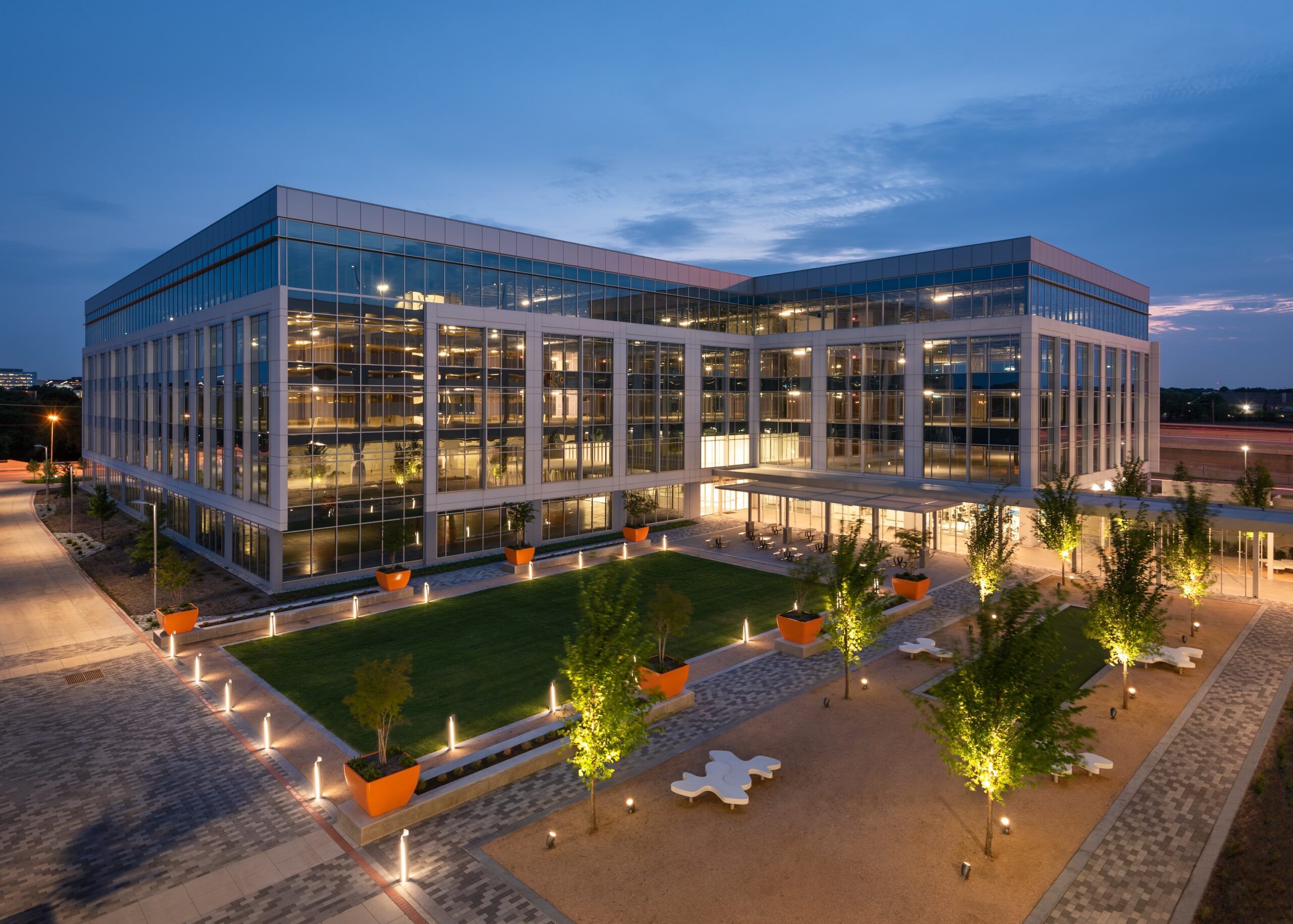
While lower color temperature light sources are usually suggested for outdoor projects, higher color temperature lighting can make landscape elements more vibrant. 4000-5000 Kelvin light sources, or light sources that render blue or green more accurately, can make trees or other landscape elements vivid and engaging. However, special color outdoor lighting should be time-controlled to minimize the effect on wildlife.
Conclusion
Elevate outdoor projects with appropriately controlled and designed lighting techniques. Lighting makes outdoor spaces safe and fantastical during the evening. Attention to these practices not only helps people, ecologies and energy reductions but also transforms outdoor spaces into interesting experiences.
Sources:
[1] IES Recommended Practice: Lighting Exterior Applications. RP-43-22. 2022.- Page 3: Basic lighting principles
- Page 5-8: Lighting design principles
- Page 7: Low CRI exterior lighting
[2] Scientific American. Why does it take so long for our vision to adjust to a darkened theater after we come in from bright sunlight? Rafael Caruso. 2007.
Garrett Rock is a seasoned lighting designer based in San Francisco, California. He earned his bachelor's degree in Interior Design from the University of California, Davis, and a Master's in Architecture from the California College of the Arts. Throughout his career, Garrett has contributed to firms such as Architecture & Light, Banks Landl Lighting Design, Geddes Ulinskas Architects and WSP. He currently serves as a lighting design consultant for Alcon Lighting and a technical writer for Insights, where he specializes in keeping readers current on energy regulations and in human-centric lighting guides for healthcare settings, retail and other commercial applications.

